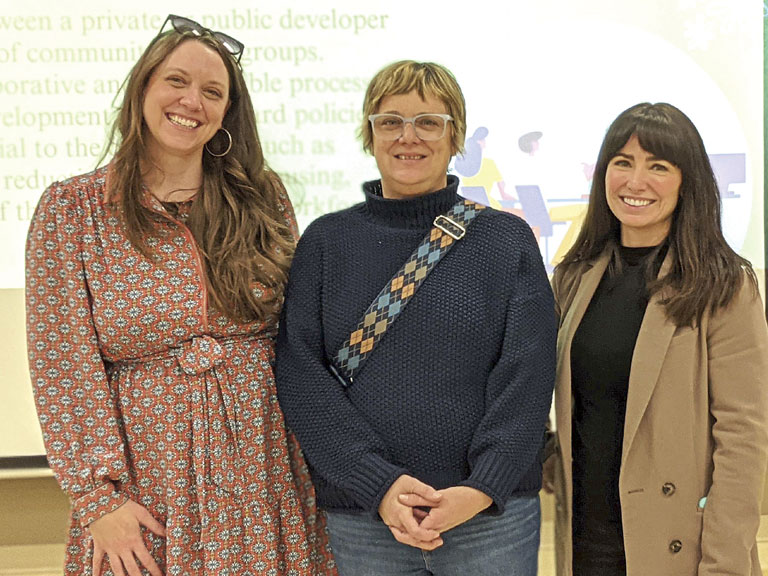County News
Community Benefits Agreements

Enhancing social, cultural and economic opportunities
The third in a series of public conversations on ways for the community to benefit from proposed developments took place at the Wellington Community Centre on Tuesday evening last week. Approximately 30 residents took part in a wide-ranging discussion on what factors were important to them as Prince Edward County is poised on the brink of potentially massive development over the next decade and more. Representatives from the Prince Edward Learning Centre, Thrive PEC and The County Foundation led small-group discussions on a number of community priority areas that were established over the past couple of years as a way to build a framework from which to approach council when it comes to development and its effect on the community. The goal is to create Community Benefits Agreements (CBA) between developers and community-based groups to ensure that developments enhance or provide social, cultural and economic opportunities for the community, rather than something that is imposed upon it. It is a means to ensure a shared vision for the betterment of the County, to foster community collaboration and provide a mutual benefit for the community and the developer.
The key focus areas for the conversations were those established by ThrivePEC, which were reached after a series of community conversations on an assetbased approach to development. These are community assets that go beyond the balance sheet and which reflect the nature and substance of the community. “We had conversations throughout the County and talked to over 400 people, did surveys and small-group engagement as well as in-depth academic interviews and created a mapping of what are our priorities in Prince Edward County, what are the assets we have that can take action on those priorities,” said Katy McIntyre, community activator for ThrivePEC. “We’ve whittled that down to nine priorities when it comes to our vision for the future, of which community wealth building is something that we all need to work together on. This event tonight is to talk about where we want to direct that investment based on what we have here and what we want to do about it.”
The ultimate aim is to build a network of various community groups and work together to create Community Benefits Agreements that could be presented to council as development projects come up. It is not limited to private development such as large housing projects, but also encompasses municipal and provincial projects such as waterworks or hospital construction. A CBA can include things like providing quality jobs and hiring local residents, provision of affordable housing, providing daycare centres and enhancing environmental protections.
It is a way of working collaboratively with developers and the municipality to address community- defined needs and goals, providing a voice for residents in the process.
The discussion last Tuesday focused on nine priority areas: affordability; job opportunities; economic diversity; sustainable tourism; climate protection; arts and culture; community connections; social infrastructure; and social services. A facilitator led the discussion at each of eight tables (social services and social infrastructure were grouped together) and collated the points raised by the participants. The discussions were often lively and animated, particularly if one of the participants had strong feelings on the topic at hand. It was evident that for many of the participants, these were things that they had been thinking about as they watched change come over their community. The discussions highlighted many areas of community concern, not necessarily linked to development, but things that were missing or could be improved.
After the small-group discussions, the facilitators provided a brief snapshot of the participants’ comments. One prominent view was that affordable rental housing, as defined by the Canada Mortgage and Housing Corporation, at 80 per cent of market rates was not in fact affordable for many County residents. Additionally, it was felt that the five per cent recommendation for the proportion of affordable homes was far too low, and there had been little consideration given to other forms of housing such as co-ops or tiny homes. In terms of community connections, a need was seen for programs for seniors and children, creating mixed-income developments, improving transit, building walkable neighbourhoods, and providing more green spaces. There was also acknowledgement that the seasonal economy should be addressed, building upon what is already here to create a yearround economy.
The next step in this process is the creation of a framework on how to attain the goals that were identified in the discussion series, and include other partners such as residents associations in Wellington and Consecon. “After that, we can start talking to developers and the municipality about what’s possible and what are the mutual benefits,” said PELC’s Christine Durant. For more information, please call the Prince Edward Learning Centre at 613.476.1181, ext. 105, or email inspire@pelc.ca

Comments (0)